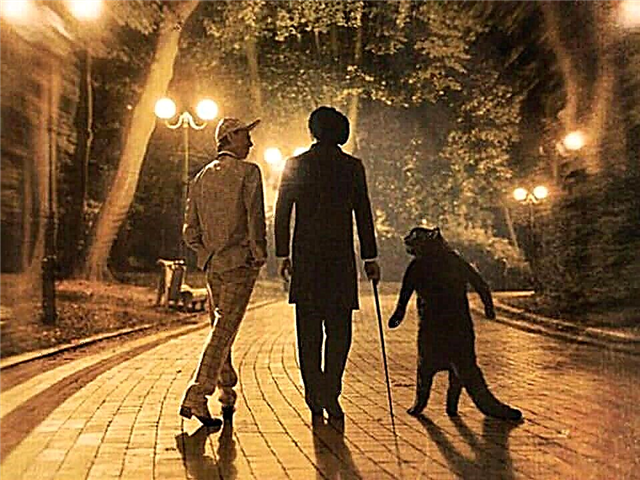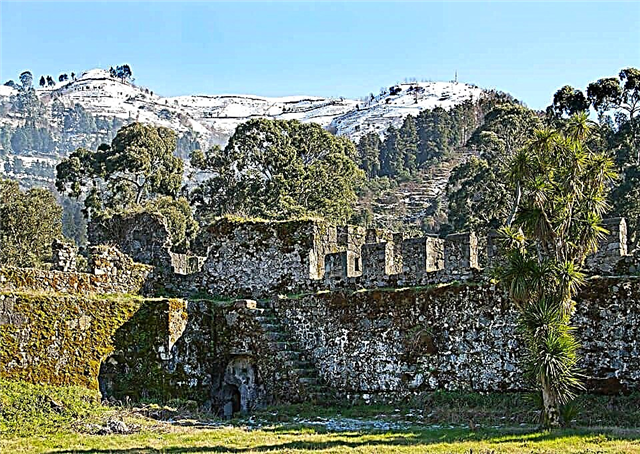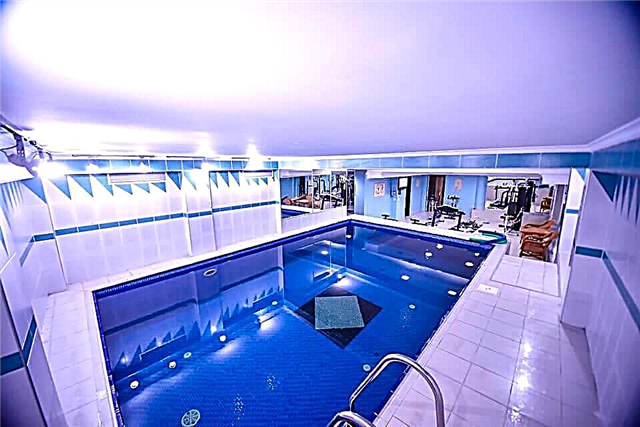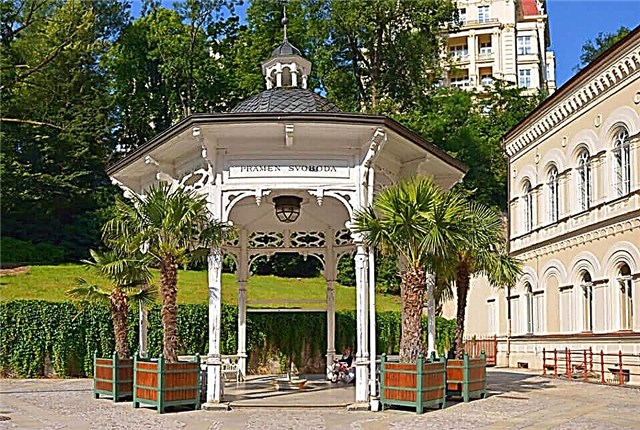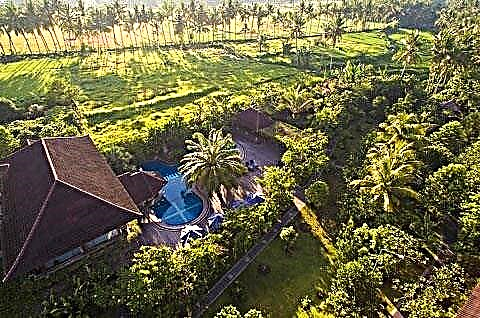Ancient Kolomna is the subject of a fierce dispute between powerful principalities, a land marked by the beneficent activities of St. Sergius of Radonezh. Nowadays, the city has become a mecca for cultural tourism near Moscow. On weekends or during holidays, city streets, museums, restaurants and historic estates fill up with tourists who come here as families.
Kolomna offers its guests not only trips to ancient monasteries or a traditional walk around the Kremlin. The phenomenon of local tourist infrastructure is a large number of small private museums dedicated to certain aspects of Russian life, craft, or even a specific household item. As a rule, their owners themselves gladly meet visitors and conduct interesting excursions.

The best hotels and hotels at affordable prices.
from 500 rubles / day
What to see and where to go in Kolomna?
The most interesting and beautiful places for walking. Photos and a short description.
Kolomna Kremlin
The main historical and archaeological complex of Kolomna, built by Italian architects in the 16th century. A small part of the fortress wall and 7 towers out of 17 have survived to this day. Most of the city's historical monuments are located on the territory of the Kremlin. Among them are temples, estates, chambers, schools, squares. The architectural ensemble of the Kolomna Kremlin was formed in the period from the 14th to the 19th centuries.

Cathedral Square
The central square of the Kolomna Kremlin, on which the chambers of the Grand Duke stood in the 14th century. The modern look of the area took shape closer to the 18th century after the general redevelopment of Kolomna. The place is surrounded by the Assumption Cathedral, the Tikhvin Church and the monastery bell tower of the Novo-Golutvinskaya monastery. From time immemorial, the square has witnessed important events in the history of the Moscow principality.

Pyatnitsky gate
The Pyatnitsky Gate is one of the towers of the Kolomna Kremlin, the main entrance to the historical part of the city. The structure reaches 29 meters in height, but several centuries ago its height was 35 meters due to the upper tower - the arrow, which has not survived to this day. There is a legend that during the Time of Troubles the massive wing doors of the gates were removed by order of Marina Mnishek. Thanks to this, Polish troops were able to calmly enter Kolomna.

Museum "Kolomenskaya Pastila"
The museum was opened in 2009 near the Church of St. Nicholas on Posadi on the territory of the Suranovs' estate. The creators carefully studied archival documents and tried to restore the technology of making Kolomna pastila, which was used in the 18th-19th centuries. Once in the city there was a whole factory for the production of this delicacy, but after 1917 it was closed, and the recipes were forgotten or lost.

Museum of Flax and Russian Woman's Life
A new museum opened in the Kuznechnaya Sloboda quarter. The basis of the exposition was the private collection of the city dweller Natalia Ryabtseva, consisting of folk costumes, home textiles, spindles, spinning wheels and other home weaving equipment. At first, the woman opened the Linnaya Blagodat store in Kolomna, and then became the owner of the museum. The exhibits are located on two floors.

Museum-estate "House of the samovar"
In Kolomna, in recent years, many small museums have opened, which are located in picturesque old estates. One of them is the House of the Samovar, which contains an impressive collection of these traditional household items. The collection contains more than 600 samovars of different sizes and colors. In a separate room of the museum, decorated like a Russian hut, there is a real traditional Russian stove.

Kolomna Museum of Local Lore
Initially, the museum collection was located on the territory of the Marina Tower of the Kolomna Kremlin. Since 1936 it has been in the building of the Church of the Archangel Michael, and since 2006 the exposition has moved to a picturesque merchant's estate of the 19th century. At the moment, the Kolomna Museum of Local Lore has three branches: "Voevoda's House", the Lazhechnikovs' estate, the Museum of Military Glory. The collection consists of over 27,000 items, including archaeological finds, paintings, icons and books.

Museum of Organic Culture
An original gallery of contemporary art dedicated to the direction of the Russian avant-garde of the XX-XXI centuries. It exhibits works by contemporary artists who support and develop the tenets of "organic culture". These include M. Matyushin, T. Glebova, A. Kozhin, V. Sterligov, P. Kondratyev, E. Guro and many others. The exposition is housed in a wooden estate - an architectural monument of the 19th century.

Museum "Kalachnaya"
Another "tasty" museum in Kolomna, dedicated to the traditional local craft - making rolls. The exposition is housed in a historic building from the 19th century. As in the Pastille Museum, the creators restored old recipes, built a roll oven and recreated the historical setting. In "Kalachnaya" visitors will be told about the peculiarities of baking and the secrets of the taste of Kolomna kalach.

Private Gallery "Museum of Favorite Toys"
A collection of dolls, games, teddy bears that were made in the period 1890-1980. The exhibits were collected by Irina Kulikova, a resident of Kolomna. In 2014, she opened a museum to show her finds to people. During the visit, the hostess herself can conduct an excursion, tell about the exhibits and their history. The idea to create a museum came to I. Kulikova in 2012, when she became interested in sewing Teddy bears.

Museum "Blacksmith Sloboda"
Exhibition of various wood and forged items created by local craftsmen. Also in the museum funds there are weapons, armor and obsolete household items (old teapots, irons, scales). The collection was started by the blacksmith I.G. Lebedev. Over the years, he collected iron exhibits throughout Russia, then rebuilt a mansion in the historic center of Kolomna and organized a permanent exhibition.

House of Posad crafts
A private exhibition hall with its own permanent collection, as well as regular temporary exhibitions. There is a real smithy on the territory. The House of Posad Crafts is a private accommodation, the owners themselves conduct excursions and talk about their exhibits. At certain hours, master classes in pottery, blacksmith's craft, decor and toy making are held for everyone.

Museum-residence “Artkommunalka. Erofeev and Others "
An unusual creative space, an exhibition hall, a performance stage and a museum in one place. It regularly hosts exhibitions of contemporary art, theatrical performances, and interesting thematic excursions. The permanent exhibition tells about the life of Soviet Kolomna in the 60s, and also recreates the specific atmosphere of the thaw and dissident spirit characteristic of that era.

Cultural center "House of Ozerov"
The center was opened in 1980 for the 600th anniversary of the Battle of Kulikovo. Its territory is intended for holding various exhibitions and concerts. Over the years, several hundred exhibitions devoted to graphics, sculpture, painting have been organized. The gallery is located in the building of a picturesque 18th-19th century mansion, which is ranked among the architectural monuments of the classicism era.

The estate of the merchants Lazhechnikovs
The estate houses one of the branches of the Kolomna Museum of Local Lore. The exposition is dedicated to the life and work of the writer I. I. Lazhechnikov. Books, household utensils, furniture, documents, photographs of family members are kept here. The rooms have recreated the furnishings of a 19th century merchant house.The museum was organized thanks to the fact that many items were preserved by the direct descendants of the writer.

Staro-Golutvin monastery
One of the oldest monasteries in Central Russia, founded in the 14th century with the participation of Prince Dmitry Donskoy and St. Sergius of Radonezh. The monastery is located at the confluence of the Oka and the Moskva River. It is believed that the construction of the monastery complex began after the conclusion of peace between the Ryazan and Moscow principalities. The first abbot was a student of Sergius of Radonezh.

Bobrenev monastery
The monastery is located near Kolomna in the village of Staroe Bobrenevo. It was founded in honor of the victory in the Battle of Kulikovo at the insistence of Sergius of Radonezh. In addition to religious functions, the thick monastery walls played an important role in the defense of the city and the borders of the Moscow principality. At the beginning of the 20th century, the monastery was closed; it was badly dilapidated during 70 years of Soviet rule. In 1991, restoration work began.

Holy Trinity New Golutvin Monastery
An active nunnery of the 19th century, built on the site of the former chambers of the local bishop. A medical center is opened at the monastery, where professional doctors-nuns work, as well as an orphanage. For visitors, excursions are regularly organized around the territory with visits to craft workshops and a refectory. The monastery also has a hotel specially adapted for pilgrims.

Church of St. Nicholas on Posada
One of the oldest Orthodox churches in Kolomna, dating back to the 16th century. At first the building was erected from wood, then, in the 18th century, it was rebuilt from stone in the "Russian" Baroque style. The temple was named after Nicholas the Wonderworker. The historic interior decoration was lost during the campaign of destruction of religious sites in the 30s. XX century. At the moment, the building belongs to the Old Believer branch of the Russian Orthodox Church.

Monument to Dmitry Donskoy
A 2007 monument dedicated to the great Russian prince, thanks to whom a turning point in the history of the Russian state took place. The statue of the winner of the Battle of Kulikovo is made of bronze and reaches a height of 5.5 meters. The sculptor depicted the prince on horseback with full military equipment, as if he was just going to a historic battle and was determined to free his land from the yoke.

Monument to Water Carrier
The sculptural composition adorned the city in 2012, it is designed to perpetuate the hard work of water carriers, which was in demand until the beginning of the 20th century. The monument was created by the local blacksmith A. Yakushev. The statue was erected at the place where the water carriers took water from the Moskva River and then transported it along the streets of Kolomna. The sculptural group consists of the figure of the water carrier itself, a large barrel and a cute dog.

Shevlyaginskaya basin
The first water supply system in Kolomna was built by 1902 at the expense of M.N. Shevlyagina. The system was able to meet the needs of residents for clean water, which was obtained from artesian wells dug on the banks of the Kolomenka River. One of the water towers, the Shevlyaginskaya basin, was restored and connected to the city water supply system in 2013.

Skating center "Kolomna"
Sports complex, built in 2006 and adapted for training and competition of speed skaters. The central arena is designed for 6,150 spectators. The complex has a children's school of the Olympic reserve. There is also a swimming pool, a recreation center for athletes, a skating museum, gyms, a stadium, a winter hall and a cafe. The Kolomna skating center has hosted many Russian competitions and world-class championships.

Memorial park
City park in the central part of Kolomna, laid out in the 70s. XX century on the site of mass graves of soldiers during the Great Patriotic War of 1941-45. Even in the time of Catherine II, the Peter and Paul cemetery was located here. The Eternal Flame is burning in the park, a memorial statue "Grieving Youth" is installed, and the Museum of Military Glory, opened on the 65th anniversary of the Victory, operates on the territory.

Peace park
Amusement amusement park, popular destination for weekends and holidays. There are numerous souvenir shops and cafes here, entertainment for children and adults is organized. The park was founded in 1948, at first it belonged to the plant. Kuibyshev, but then became available to all citizens. The place is often called "the green lungs of Kolomna" because of its vast area and a large number of plantings.


